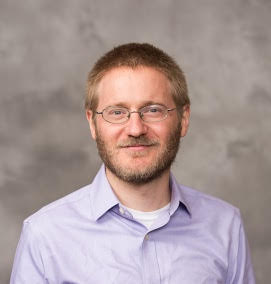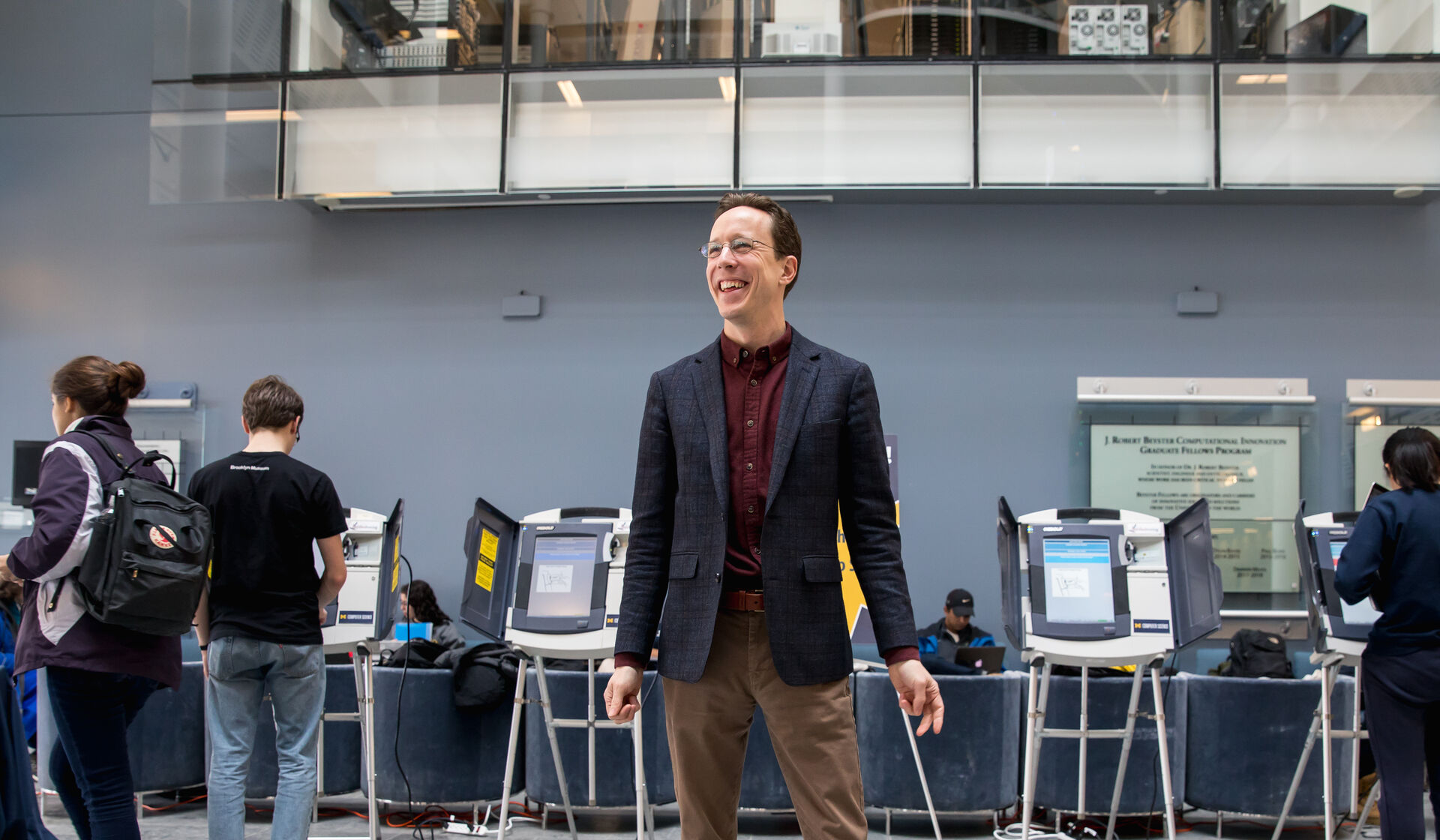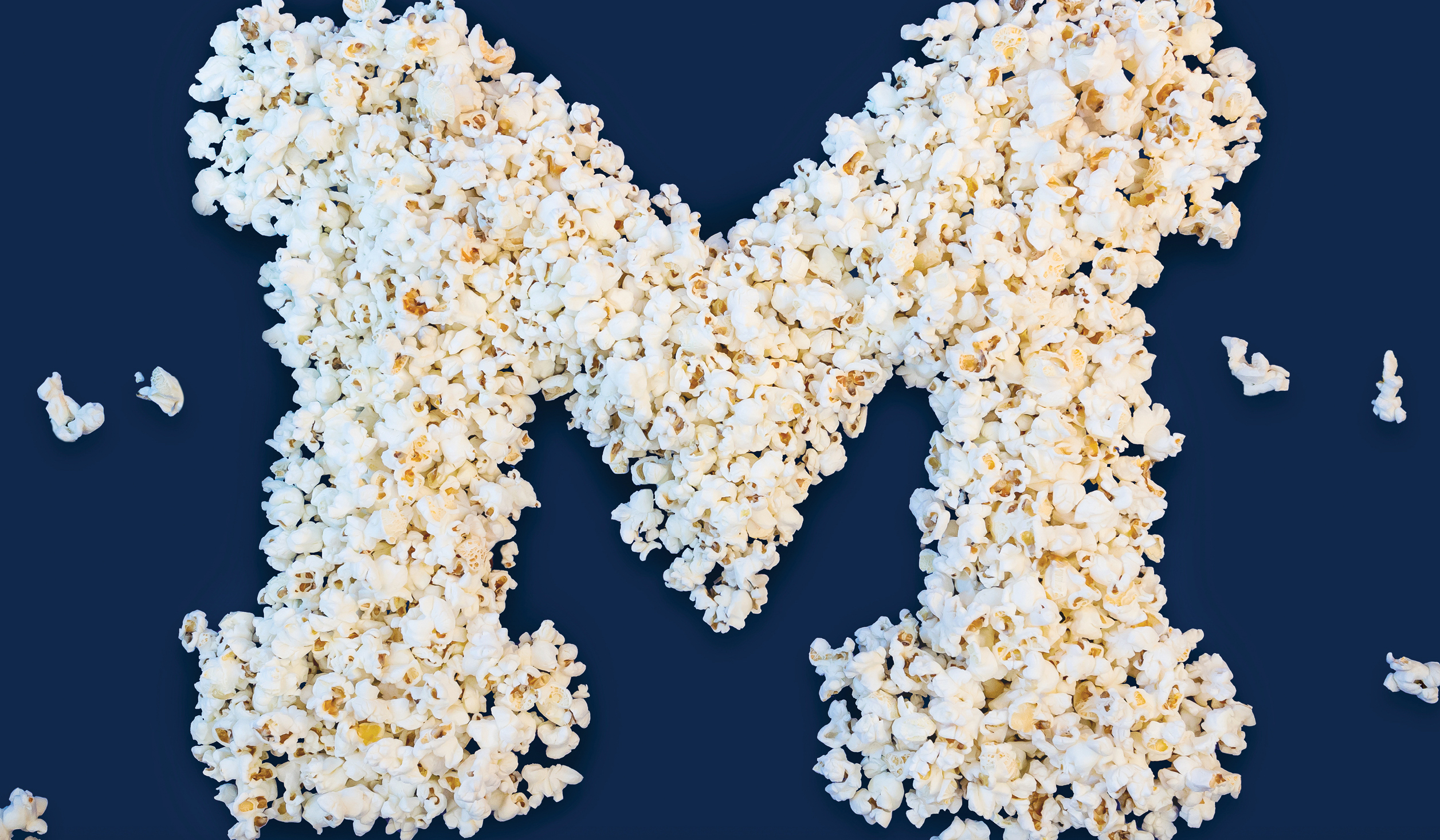The COVID-19 pandemic changed life as we know it, plunging the world into anxious uncertainty. With the arrival of the pandemic, businesses shuttered, universities and schools shifted to online education, and millions of people around the world went into lockdown.
U-M researchers are taking part in a global discussion about what that changed world will look like. Michigan Alumnus talked to several of them about the pandemic’s long-term impacts and the lessons we must take away before the next global crisis strikes. Interviews have been condensed and edited.
This isn’t the first virus humanity has come up against, and it won’t be the last. What lessons do you hope we learn before the next one hits?
 ARNOLD S. MONTO, a professor of epidemiology in the School of Public Health, consulted with government authorities during the 2002-04 SARS outbreak, which involved a virus related to the one that causes COVID-19.
ARNOLD S. MONTO, a professor of epidemiology in the School of Public Health, consulted with government authorities during the 2002-04 SARS outbreak, which involved a virus related to the one that causes COVID-19.
Novel viruses are not something we have control over. The one thing that is absolutely predictable is that with travel the way it is, it’s going to move fast. I think that may be as important, in terms of the difference between SARS and this virus, as any difference in the virus. We didn’t have global travel coming out of the epicenter in 2002, when SARS started in southern China. (The virus that causes COVID-19) spread all over the world before we realized how serious it really was.
But the big problem is the fact that we were unprepared. We need to be looking at different scenarios — different profiles of severity, who is involved, the extent of hospitalization. We thought we were doing this with influenza preparedness, but that lesson really wasn’t learned — basically, a lot of the preparedness went on the back shelf. The Centers for Disease Control said, at the first big news conference on Feb. 25, “Dust off your pandemic plans.” And they shouldn’t have gotten dusty in the first place. We have to keep a focus on the possibility of untoward things happening and be flexible in the response. And the problem there is that it costs money, and the money comes from politicians, who say, “If it’s not on my watch, why should I care?” But we really have to keep a long, long view.
Poor people are always hardest hit by disasters, and this one has been no different. How can the most disadvantaged Americans recover?
 H. LUKE SHAEFER, a professor in the Ford School of Public Policy and the School of Social Work, directs Poverty Solutions, an interdisciplinary initiative of U-M President Mark Schlissel that partners with community stakeholders on efforts to prevent and alleviate poverty.
H. LUKE SHAEFER, a professor in the Ford School of Public Policy and the School of Social Work, directs Poverty Solutions, an interdisciplinary initiative of U-M President Mark Schlissel that partners with community stakeholders on efforts to prevent and alleviate poverty.
I have every expectation that poverty is going to go up and stay up for at least the next year and a half. There is a good chance that our economic challenges will persist longer than the public health crisis. We’ve already started to see data showing huge spikes in hardship, especially among families with children. I’m deeply concerned about that. But I’m also intrigued by some of the ways that we, as a country, have responded, including a temporary but major expansion of unemployment insurance, which is a program that hasn’t historically served low-income workers very well. My hope is that the action of the federal government and Gov. Gretchen Whitmer here in Michigan will make that program work much better during this time.
The other piece that was really interesting was the $1,200 per-person payment. This is the very first time that we really took a “basic income” approach to an economic crisis. Even people who have no taxable earnings are eligible for this, and that’s the first time that’s ever been true. I think that’s a reflection of all the work by a lot of us in the field, (who have shown) that cash is often the most efficient way to deal with a spike in hardship.
So I think we’re at a crossroads where we could go back to what we were doing before or we could try to get as many people served by our safety net as possible. I don’t know what direction we’re going to go in, but there’s an opportunity in this that that I hope we don’t miss.
With schools and universities closed, educators moved their classes online. Will this crash course in educational technology have a lasting impact on how we learn and teach?
 ELIZABETH KEREN-KOLB is a clinical associate professor of education technologies in the School of Education.
ELIZABETH KEREN-KOLB is a clinical associate professor of education technologies in the School of Education.
Connecting students’ everyday lives to school is something that we haven’t been doing well, and I think that has become apparent. For so many years, education technology has been the side dish, but technology can support the home-to-school connection. Thoughtful school districts will take that lesson and really start to create more blended (online and offline) learning, with technology that encourages families and caregivers to be more involved.
Meanwhile, the issue of digital access has bubbled to the surface. Now that children are remote, we’re seeing that a great number are just not able to access digital learning. We’re starting to see this idea of digital access as a civil right.
In higher education, I think we will be seeing more online learning from institutions that traditionally did not offer as much. But I also think that universities will work hard to find a way back to the face-to-face. This in some ways is a great experiment in how much screen time is too much. We’re recognizing that being social is part of being human, and human-to-human contact just can’t be replaced.
 Between the loneliness of social distancing and anxiety about the virus itself, the psychological effects of living through a pandemic are already clear. But what will be the long-term mental health impact?
Between the loneliness of social distancing and anxiety about the virus itself, the psychological effects of living through a pandemic are already clear. But what will be the long-term mental health impact?
MONICA STARKMAN, MD’63, an associate professor of psychiatry (active emerita) and member of U-M’s Depression Center, has studied the psychological aftermath of disasters, including the 9/11 terrorist attacks.
This virus will be with us for many more months, maybe even years. Most everyone will continue feeling some degree of anxiety and stress. There’s going to be more anxiety in depressed people than perhaps there was before. One of the warning signs for suicidal risk is when people have anxiety on top of their depression, so there might be an increase in suicide attempts, which is what my research found during the two years following 9/11. There may be an increase in substance abuse and domestic abuse. There will also be physiological impacts of isolation. There is something about having another person in the environment, and about the sense of touch, that affects and regulates our physiology as well as our mental state, so people living alone may be at greater risk.
On the other hand, we have to look at resilience. If people review how they have successfully coped with other challenges — that they have succeeded in coping — they can tap into that resilience and think through specific strategies that worked well for them previously. I also think that the fact that this has affected everybody will mean now it’s no longer a shameful thing to say, “I’m feeling stressed; I’m feeling depressed.” There may be a positive effect and that’s to destigmatize, to help people not feel that it’s a weakness when they aren’t able to cope as successfully as they might like or to have these surges of feelings.
 As we stare down climate change, we’re going to face more and more severe disasters, including hurricanes, fires, and floods. What can the pandemic teach us about how to recover from the next disaster?
As we stare down climate change, we’re going to face more and more severe disasters, including hurricanes, fires, and floods. What can the pandemic teach us about how to recover from the next disaster?
SUE ANNE BELL, a nurse practitioner and assistant professor in the Department of Systems, Populations and Leadership in the School of Nursing, researches the health effects of disasters and how we can better prepare for them.
We’re still taking a reactive rather than a proactive approach to disasters, and that’s one of the biggest challenges. I think one thing we will learn from this is that, in good times, when there’s nothing major going on, that’s not the time to cut the funding.
One thing that has worked for this disaster is social cohesiveness. There’s been a lot of research showing how important it is to develop bonds of trust with other people in an emergency. A key concept is community resilience — how strong the community is and how able people are to bounce back. And in this, we’ve seen that even though we’re socially distancing from each other, people are willing to step up and help and be kind to their neighbors.
Globally, there’s been a lot of information sharing from places that had high numbers of cases early. Italians, as they saw this coming, learned from China. We were able to learn a lot from Italy and apply some of those lessons. That kind of global resource sharing is really important.
 Stay-at-home orders have led to unprecedented rates of unemployment as businesses are forced to shut down. How long can we expect to feel the economic impact?
Stay-at-home orders have led to unprecedented rates of unemployment as businesses are forced to shut down. How long can we expect to feel the economic impact?
GABE EHRLICH, MA’08, PHD’12, is director of the Research Seminar in Quantitative Economics at LSA, where he forecasts U.S. and Michigan economies.
I expect it will take quite some time for the economy to recover fully. In our forecast, we get back up to approximately where we were at the beginning of this year by the end of 2022. That’s essentially three years, and that’s a relatively optimistic forecast, in which we don’t have a major second wave of the disease. We will have a pretty sharp bounce back in the economy as the disease recedes this year, but after we get part of the way back up, it’s going to be slower progress from there. We know what industries will lag: retail, restaurants, bars, hotels, and travel.
A question here in Michigan: What happens to vehicle demand? We’re hoping that we can see a pretty strong recovery in the light-vehicle market. At least for Detroit, it could potentially be less bad than the Great Recession. I think in terms of the severity of the shock, it’s larger, but the hope is that it won’t last as long. Recovery from the Great Recession was slow, and what I’m hoping is that the policy response that we’ve seen from the federal government is going to help the economy recover a little more vigorously this time.
As people stay home and businesses close their doors, we’ve seen a lot of disruption to business supply chains, from milk to toilet paper. How will business adapt to an uncertain future?
 RAVI ANUPINDI is a professor of operations research and management at the Ross School of Business, where he researches supply chains.
RAVI ANUPINDI is a professor of operations research and management at the Ross School of Business, where he researches supply chains.
From a supply chain perspective, this kind of a double whammy — when you have a supply shock and a demand shock — is rare. Effective response to such disruptions requires a high degree of resiliency. Unfortunately, many company supply chains were structured around efficiency. There is a trade-off between efficiency and resiliency. Companies that have a fairly robust supply chain risk-and-resilience program will know how to navigate this crisis. Going forward, others will need to begin to focus more on resiliency.
There is a lot of talk about whether this is the end of globalization, but I don’t think so. This is not the end of globalization but the beginning of resiliency. Developing resiliency starts with creating a “map” of company supply chain. This will allow a better assessment of vulnerabilities, including, for example, if your supply chain is very dependent on certain geographies or perhaps single suppliers.
Beyond network structure, firms also need to think carefully about resiliency strategies within a facility. How is work organized within your factory or office? How compact is that workspace? Many businesses that have been structured in such a way that people work in very close quarters will have to begin to reevaluate that — look at the meat-processing plants shut down (due to COVID-19 outbreaks).
Firms will have to rethink the structure of work in general to see if they should bring in more technology, maybe more robotics. Smart use of technology can allow companies to restructure work to achieve optimal social distancing as well as find the right balance between remote and on-site work, to ensure business continuity during disruptions like a pandemic.
Amy Crawford is a freelance writer in Ann Arbor. A frequent contributor to Michigan Alumnus, she also writes for Smithsonian, HuffPost, and Nature Conservancy.





